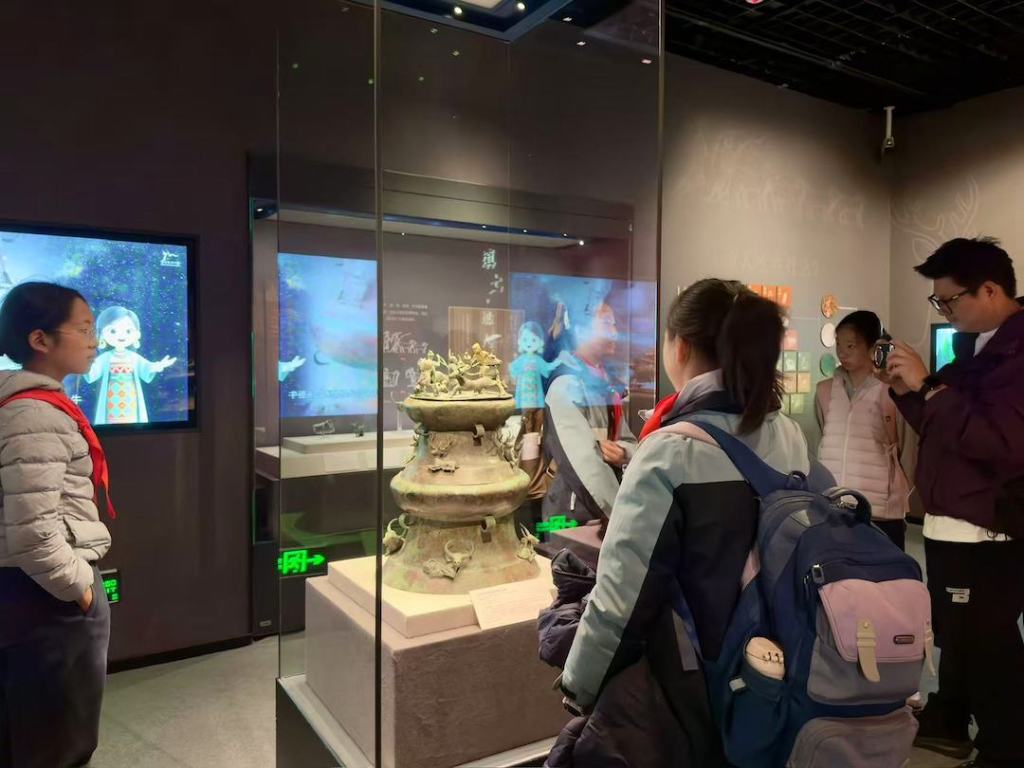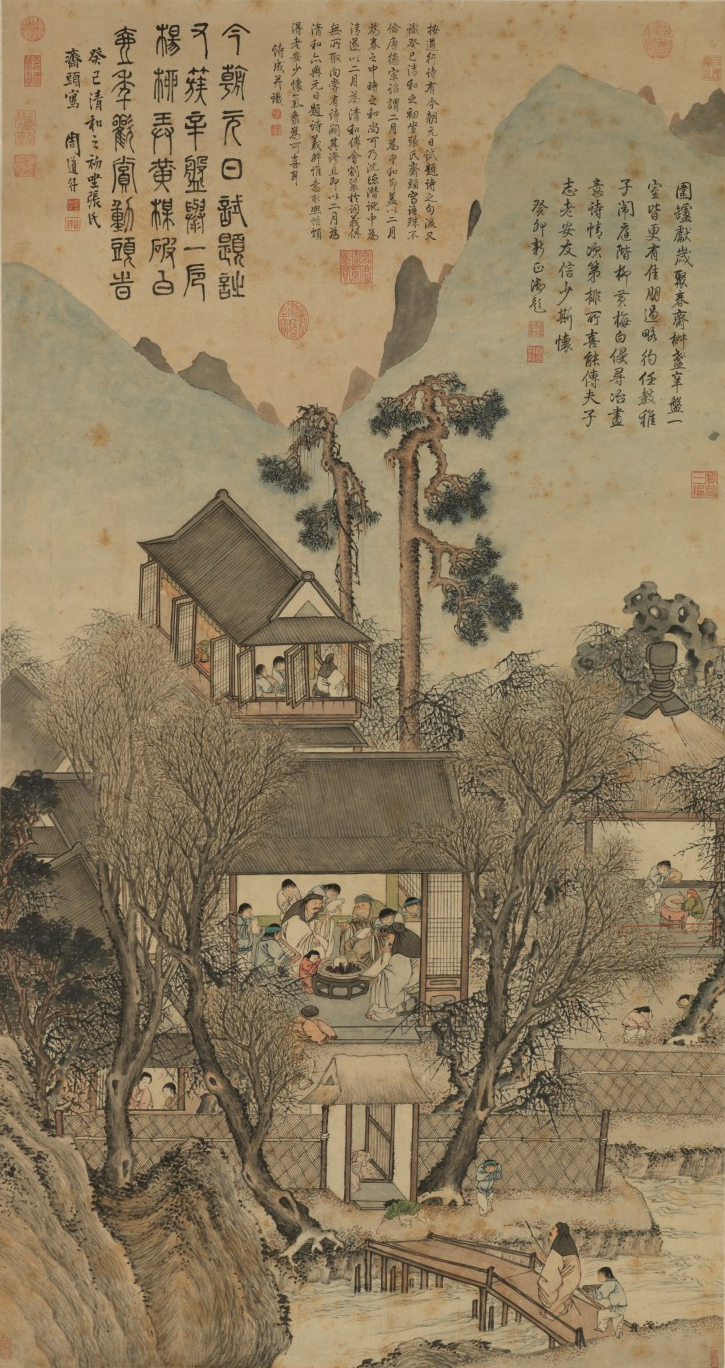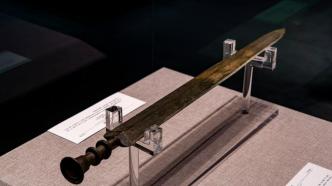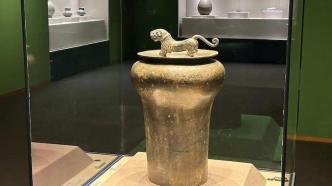
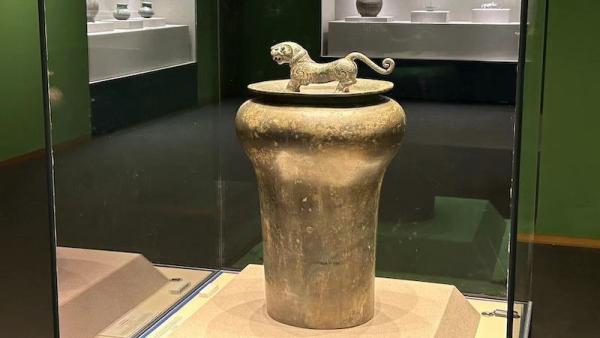
The Paper learned that on March 14, the "Xunba Ji: A Series of Chinese Civilization Diversity and Oneness Series II" jointly organized by the China Maritime Museum and the China Three Gorges Museum in Chongqing officially opened at the China Maritime Museum.
The exhibition is based on a group of typical Pakistani civilization artifacts unearthed in the Three Gorges area, to show the audience the past events and characteristic culture of the Ba people lost in the long river of history, and to explore the diverse traces of Chinese civilization. The 132 pieces/sets of cultural relics on display include the Warring States Bronze Ware "King Yu Wang" and the bird-shaped statue among the top ten treasures of the China Three Gorges Museum in Chongqing. Because it is the largest of its kind in China, the tiger button enjoys the reputation of "the king of the tiger". Another bird-shaped statue is noted for its exquisite casting and workmanship.

Bronze tiger button of the Warring States Period at the exhibition site
This exhibition is the second exhibition of the "Diversified Chinese Civilization Series" launched by the China Maritime Museum after the 2022 "Great Han Sea Frontier: South Vietnam Maritime Civilization Exhibition". With the migration of ethnic groups, Ba culture continues to evolve and interact with Chu and Shu cultures, presenting a trend of cultural integration of "Ba and Chu are of the same style" and "Ba and Shu are one family", and eventually naturally flow out the evolution pattern of pluralism and unity of Chinese civilization.
Cultural relics trace the past of Ba people in the depths of history
Starting from clarifying the profound cultural heritage of the Chinese road, the exhibition is divided into five parts: "Exploring the Origin of the Xiajiang River", "Remaining Soldiers on the Battlefield", "Rituals and Music in the South", "Benefiting the Four People", and "Returning to China". According to the content planner of this exhibition, Chen Chen from the Exhibition Department of the China Maritime Museum, the exhibition "Xunba Ji" mainly revolves around the two main themes of "Xun" and "Ba". The part of "searching" mainly leads to the exploration and discovery of Ba culture through combing historical records and discoveries in archaeological circles, which is reflected in the section of "Exploring the Origin of Xiajiang River" in the exhibition; the part of "Ba" revolves around what is Ba Expand the narrative, including sections such as "Soldiers on the Battlefield", "Rituals and Music in the South", "Benefits to the Four People", and "Returning to China".
As an ancient nation that has existed in history and has been differentiated and integrated, the Ba people have traveled all over Chongqing, Sichuan, Hubei, Hunan, Guizhou and other vast areas. In the continuous struggle against nature and powerful enemies, they left many precious treasures. historical remains.
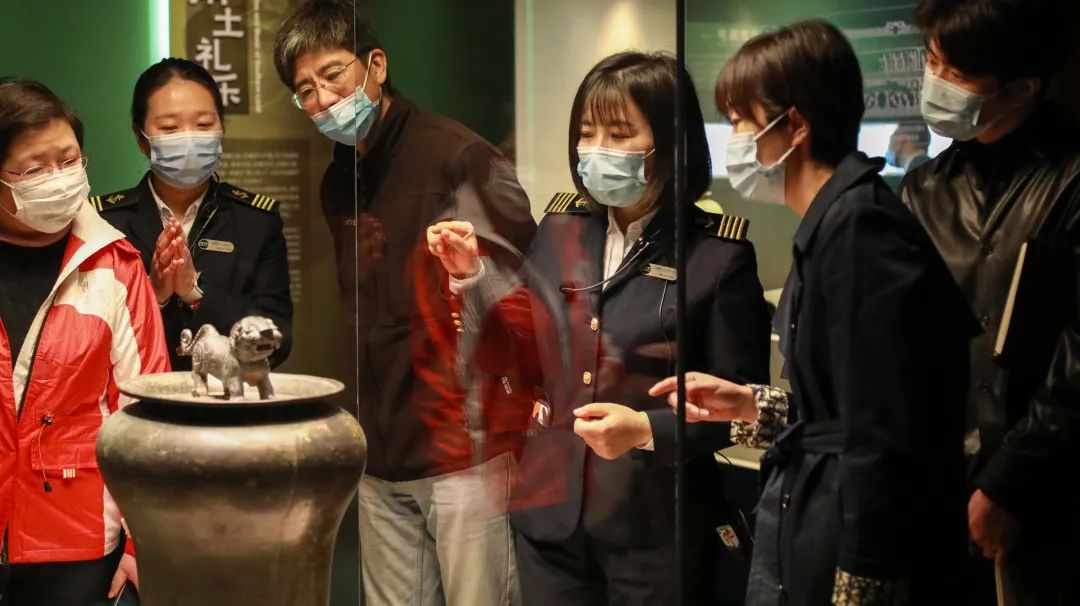
exhibition site
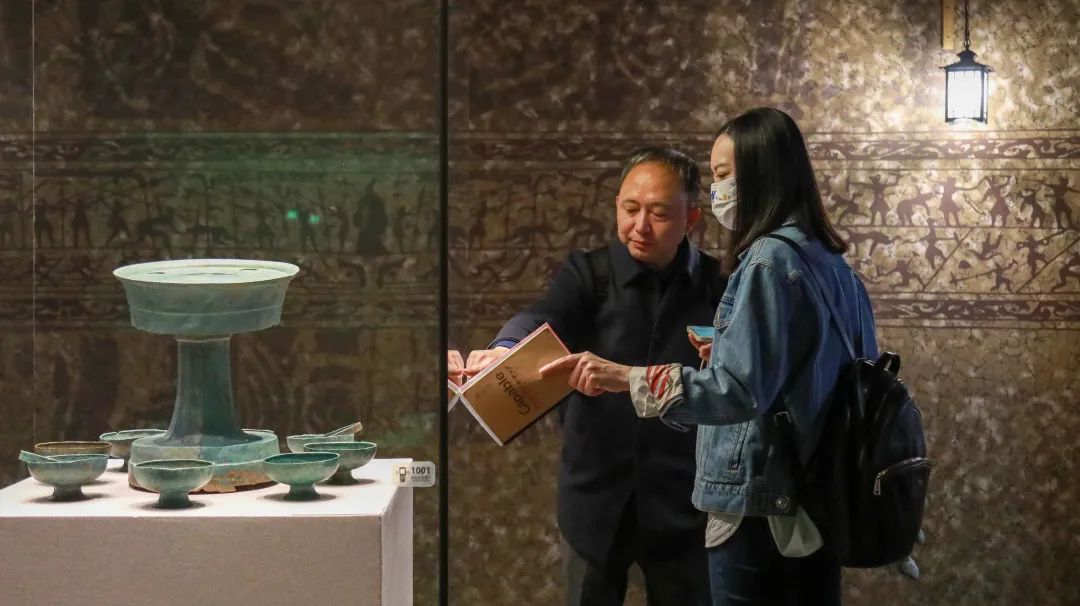
exhibition site
The archaeological exploration of Ba culture can be traced back to the early 20th century. From 1941, when archaeologist Mr. Wei Juxian proposed the concept of "Bashu culture", to the archaeology of the Three Gorges Water Conservancy Project in the early 1990s, archaeological materials related to Ba culture have become increasingly abundant. Among them, the Xiaotianxi Cemetery in Fuling is the highest-ranked Ba Kingdom cemetery discovered so far, and it is probably the royal tomb area of the Ba people.

exhibition site
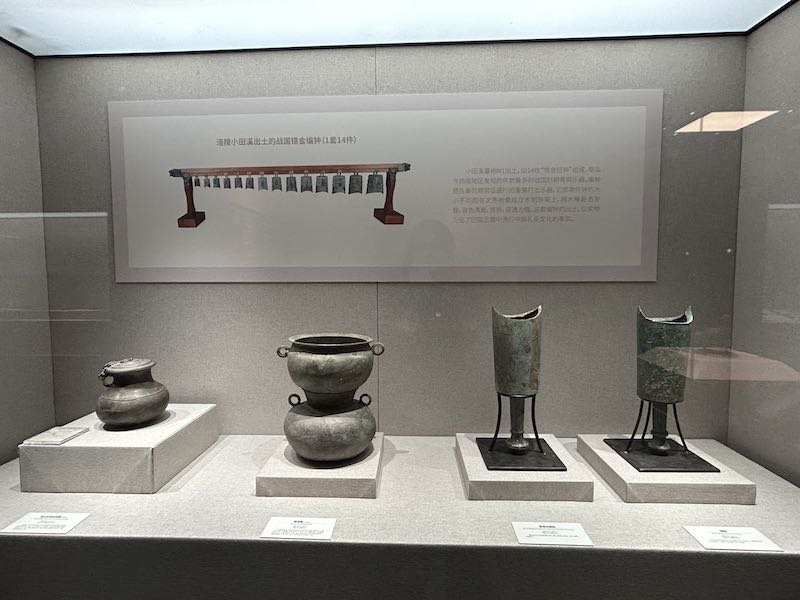
exhibition site
The section "Exploring the Origin of the Xiajiang River" exhibits more than a dozen cultural relics unearthed from the Baguo cemetery in Xiaotianxi, Fuling, including the bird-shaped statue, one of the top ten treasures of the China Three Gorges Museum in Chongqing, which reflects the diet of the upper class of the Ba people , the representative food utensils of etiquette culture and the jade group pendant discovered for the first time in the Ba culture area.
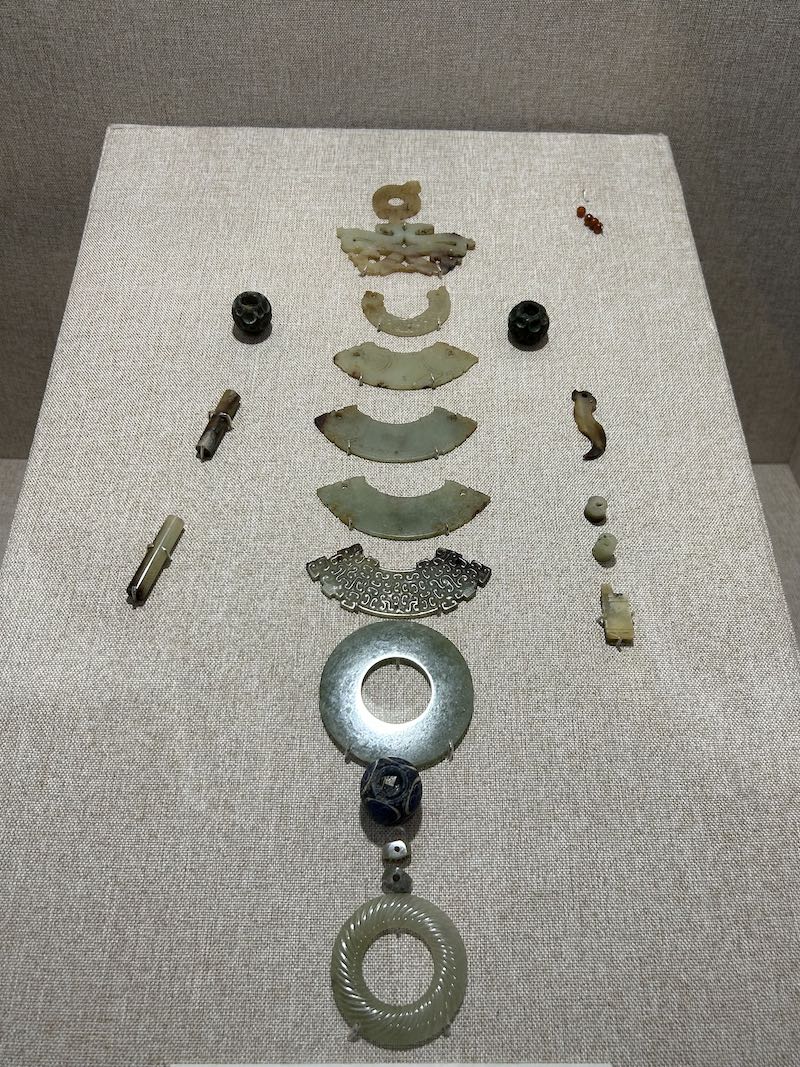
jade pendant
A history of the Ba people can be said to be a history of war, and the characteristics of the Ba people are "natural courage", "straightforwardness and righteousness". "Huayang Guozhi" records that Ba people participated in the famous battle of King Wu's defeat of Zhou - the Battle of Muye. During the Spring and Autumn Period, Ba and Chu fought peacefully in the Jianghan Plain, winning and losing. The "Soldiers on the Battlefield" section displays the most distinctive Bashu-style bronze weapons in Bashu culture. Judging from archaeological unearthed materials, although the weapons of the Ba people are relatively common, the specific styles and decorations all reveal a strong Badi style. The main long weapons include Ge, spear, halberd, and battleaxe.
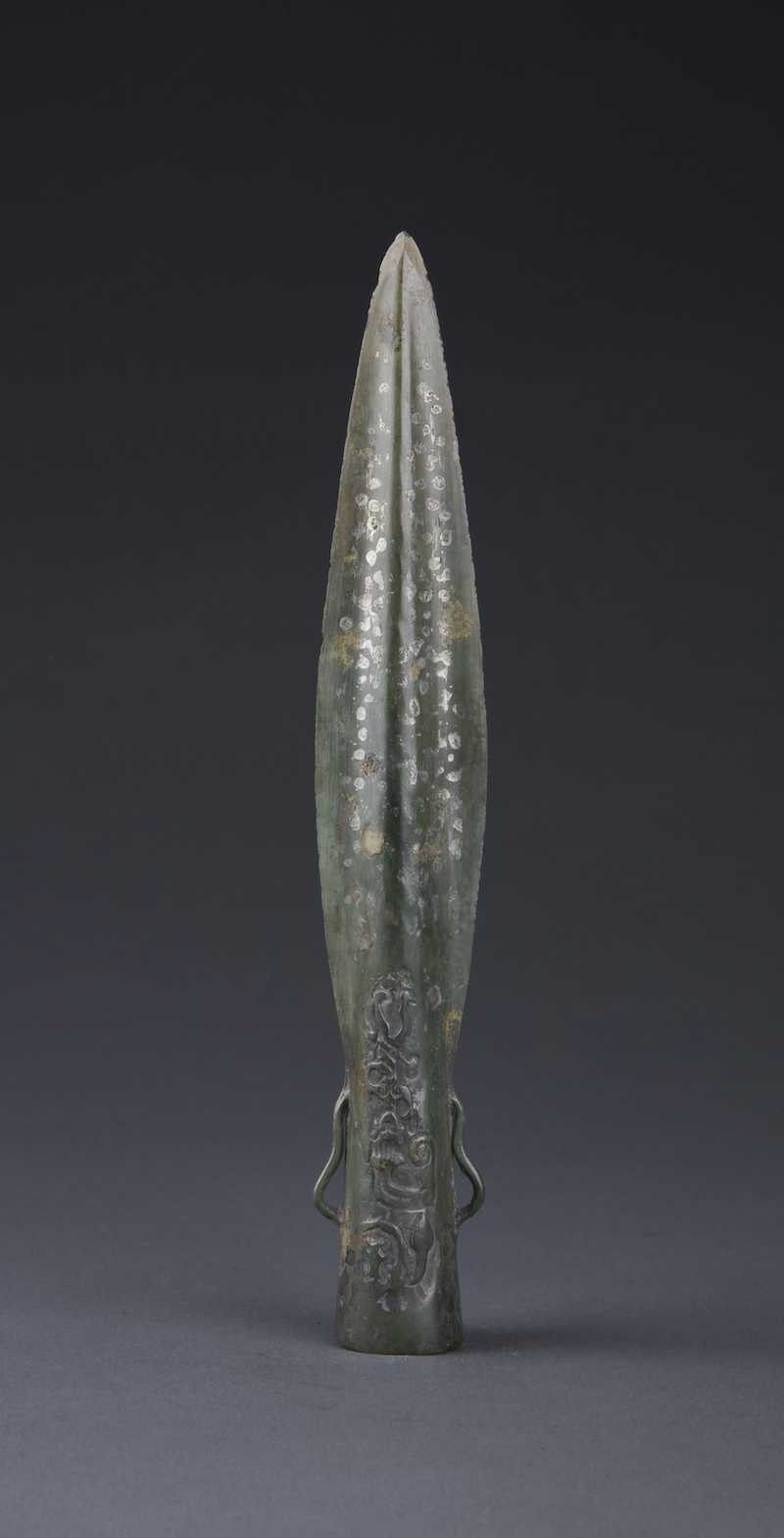
Warring States silver-spotted human-pattern bronze bow and ear spear
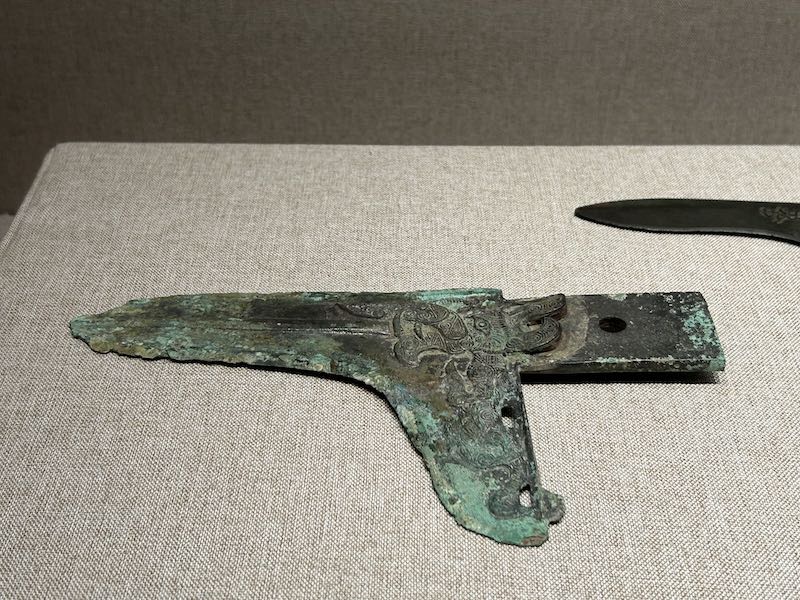
Bronze Ge with tiger pattern at the exhibition site
After the establishment of the Zhou Dynasty, Ba was named a sub-state. Together with Pu, Chu, Deng and other countries, Ba State became the "Southern Land of Zhou". Around the middle and late Warring States period, "the seven kingdoms became kings, and Ba also became kings." The etiquette culture of the upper class of the Ba people was deeply influenced by Zhou culture and Chu culture. At the same time, combined with their own cultural beliefs and environmental conditions, on the basis of learning and absorbing advanced foreign cultures, they created an inclusive and unique bronze ritual music. culture. Among them, the tiger button is the most characteristic bronze ware of Ba culture. The "Nantu Ritual and Music" section exhibits the largest and best-preserved tiger button Chunyu, which has the reputation of "King Yuwang" among similar complete utensils in China.
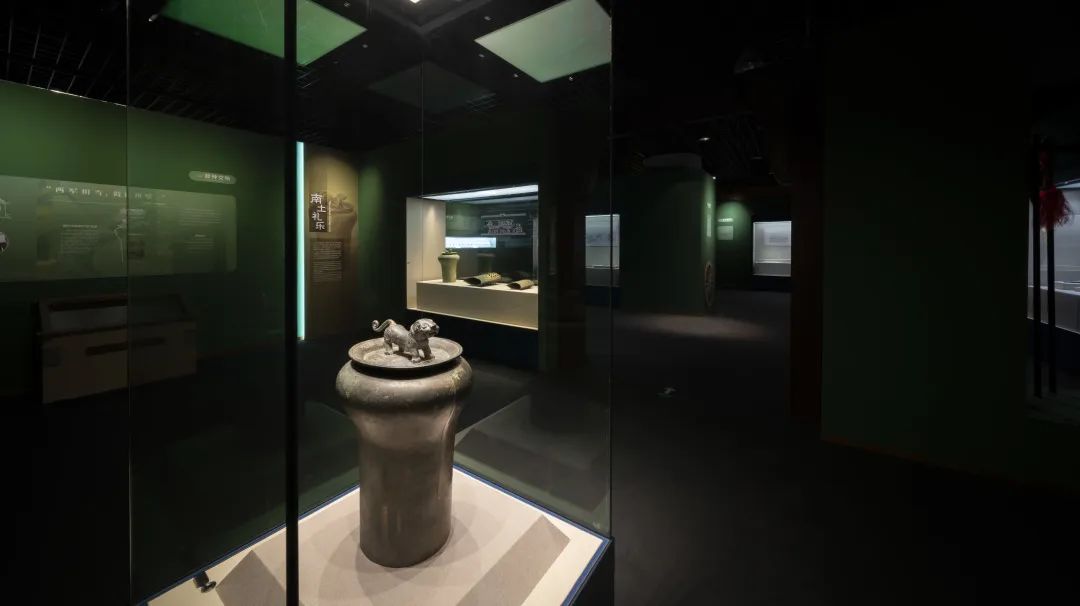
Tiger Button at the exhibition site
"Through the Benefits of the Four Peoples" shows a cross-section of the production and life of the Ba people, whose representative pillar industry is salt production. In the exhibition hall, there are sharp-bottomed cups and cups unearthed from the Zhongbazi site in Wanzhou, one of the famous ancient sites in Chongqing. Lace-mouthed round-bottom pots. Since the site where these pottery pots were unearthed is rich in brine resources, researchers speculate that they should be containers for people to dry and boil brine to make salt. The scene of Ba people making salt is also restored in the exhibition hall.
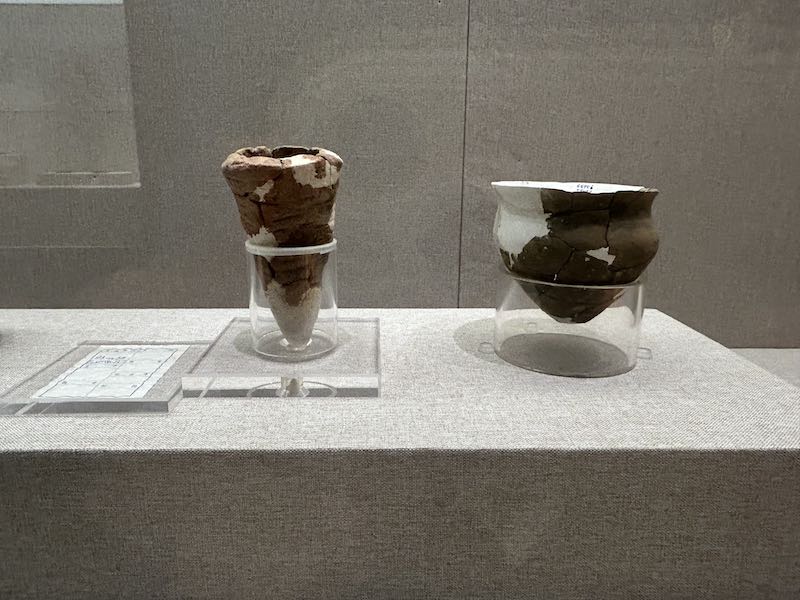
Exhibition site Spike-bottomed cups and lace-mouthed round-bottomed jars
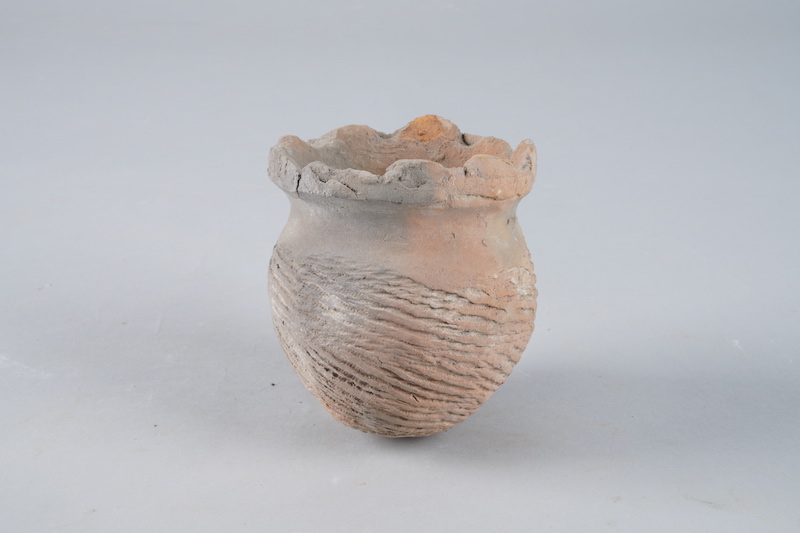
Lace mouth round bottom tank
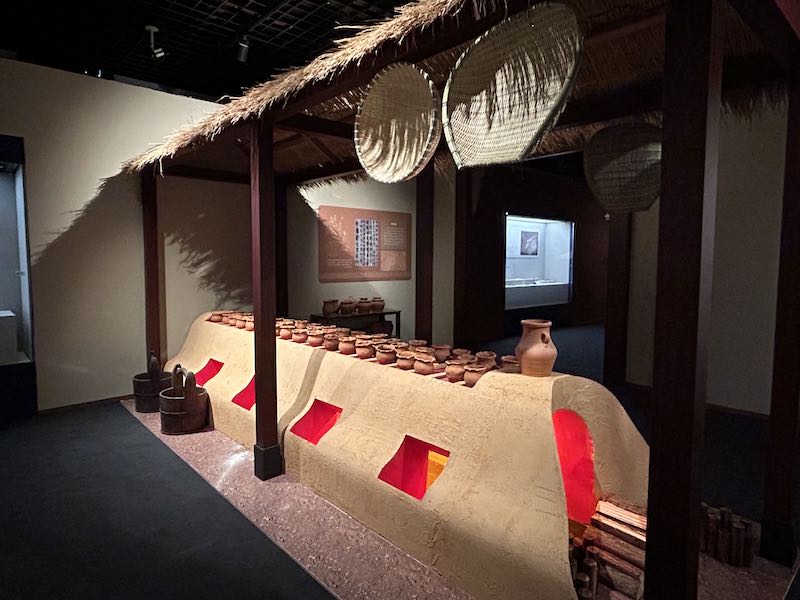
In the exhibition hall, the scene of Ba people making salt was also restored.
The "Returning to Huaxia" part shows the process of Badi's integration into the Chinese cultural circle after the unification of Bashu by the Qin Dynasty, and also echoes the theme of the exhibition.
"Using gold to match the drum", the legendary experience of Hu Niu's "to the king"
This exhibition exhibits the Warring States Bronze "King Yu Wang" and "Bird-shaped Zun" among the top ten treasures of the China Three Gorges Museum in Chongqing. "Hu Niu Yu" is the bronze ware with the most characteristics of Ba culture, carrying rich cultural connotations and strong imprints of Ba culture. The "bird-shaped statue" embodies the beauty of its casting and craftsmanship, and is also a manifestation of the Ba people's aesthetic taste.

Bird statue
According to Peng Xuebin, a researcher at the China Three Gorges Museum in Chongqing, the tiger button is a type of cultural relic with the most Ba cultural characteristics. "Actually, the yu was not an invention of the Ba people, but adding a tiger button to the yu is a re-creation and innovation of the Ba people, and it has become a representative cultural relic of the Ba people that has always been prosperous."
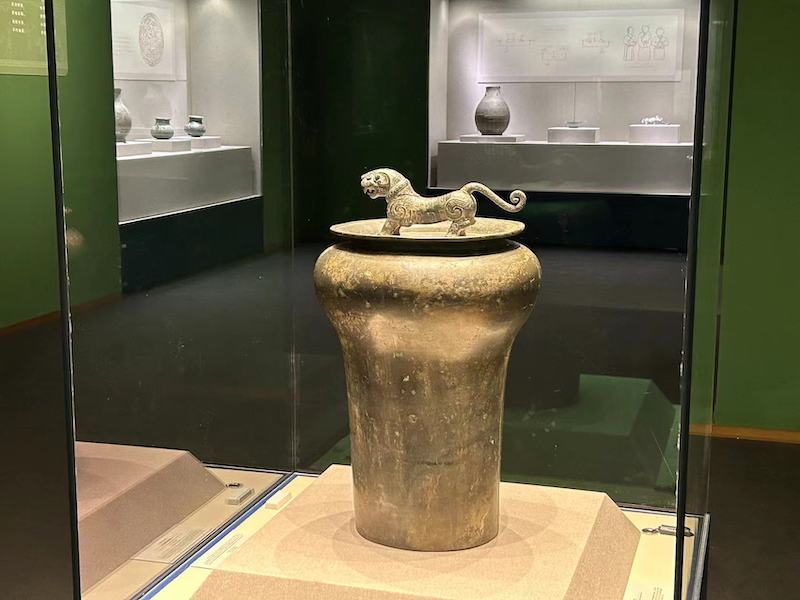
Bronze tiger button of the Warring States Period at the exhibition site
The tiger button Yuyu exhibited this time has the reputation of "King Yu" because "it is 68 centimeters high and weighs 30 kilograms. "Peng Xuebin said, "I often describe it as a heroic and strong man. Its shape is very similar to a man's arm. The "arm" is very long, the "muscles" are full, and the tiger head on it is majestic. The practical use is perfectly coordinated and matched."
The 錞 is an ancient musical instrument. Its original function was mainly as a military instrument. "Zhou Li" records the Western Zhou Dynasty: "Using gold 錞 and drums". When knocked, its "sound is like thunder". In the upper class of Pakistan 2000 years ago, its use was more extensive. It can be seen in wars, banquets, sacrifices and other occasions, and it can be called the "national important weapon" of Pakistan.
In addition to the above-mentioned features, five groups of decorations are carved on the surface of the plate: a human head in a bun, a feathered man standing on the bow beating drums, a fish and a cloud pattern, a dragon and a persimmon stalk, and a flower stalk (palm pattern), which truly shows the year 2000. The occupation and belief of the former ancient Pakistani people. The core pattern is the combination of a standing tiger and a human head in a bun on the disk, which should be related to the Ba people's ancestral memory of Lin Jun's "tiger drinking human blood".
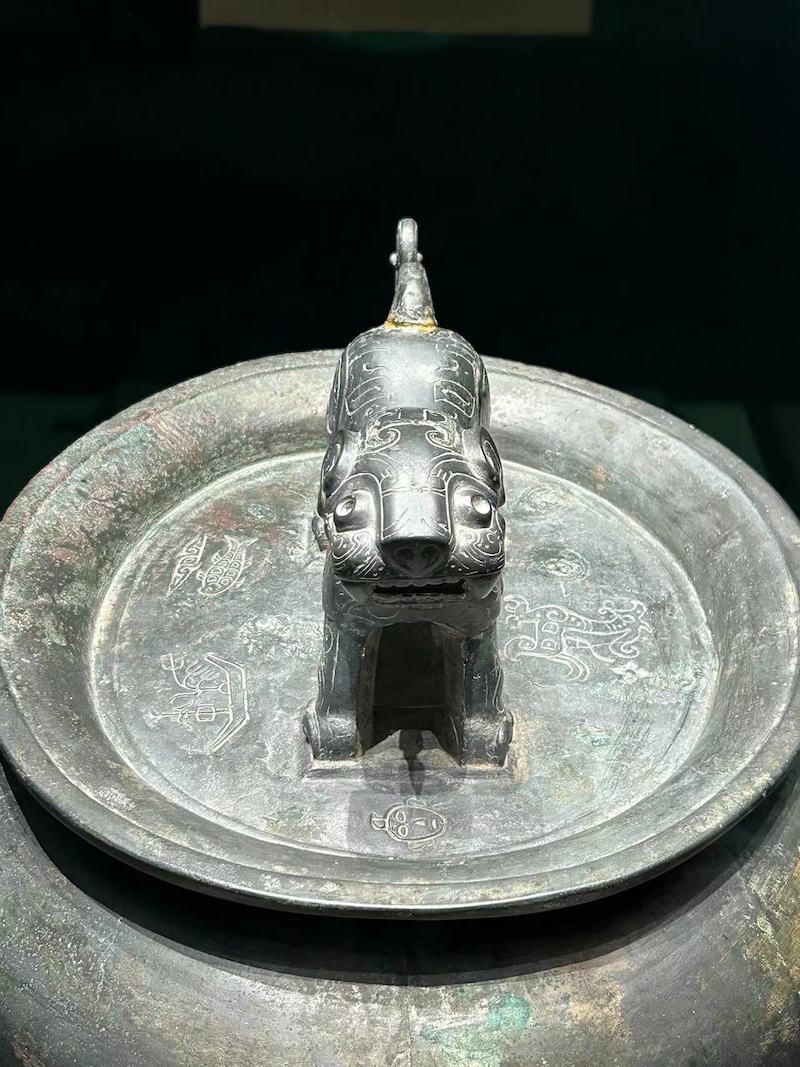
Standing tiger and ornamentation on the plate with tiger button on the exhibition site
These patterns reflect the connection with sacrifices, the ancestors of the Ba people, and the culture of rivers and rivers. For example, Yuren races, "Yuren" is a flying fairy with wings in ancient Han mythology. The race originated in the southern region rich in water resources, and later evolved into a water sacrificial activity. There are different themes in different regions, such as commemorating the patriotic poet Qu Yuan and Wu Zixu in Chu State; commemorating the Yue King Goujian and Zhang Shen's birthday in Soochow.
"These decorations carry a lot of cultural information and are very valuable treasures." Peng Xuebin said, "We call these patterns 'Bashu Graphic', which means it is the oldest picture language of Ba people and Shu people. The meaning of "Bashu Tuyu" is as obvious as that shown in the picture. The difficulty is that we have no way to string it all together for an overall interpretation. Scholars believe that this is the latest extant writing in the world, and no one can understand it. Read."
And why the tiger button is added to the plate, this is related to the legend of the ancestors of the Ba people. It is mentioned in Jin Ganbao's "Sou Shen Ji", "There are people who drive people in the Jianghan area, and the descendants of their ancestors can turn into tigers." So the relationship between tigers and Ba people is very close. In Jin·Fan Ye's "Book of the Later Han Dynasty", there is another: "When the Lord Lin died, his soul became a white tiger. Ba Shi used tigers to drink human blood, so he used human temples."
The cultural implication of the image of a tiger biting a man is reflected in 1. People use the power of animals to communicate with heaven and earth in order to obtain divine power. 2. Man makes sacrifices to divine animals for protection. 3. Defend the country and conquer the Quartet.
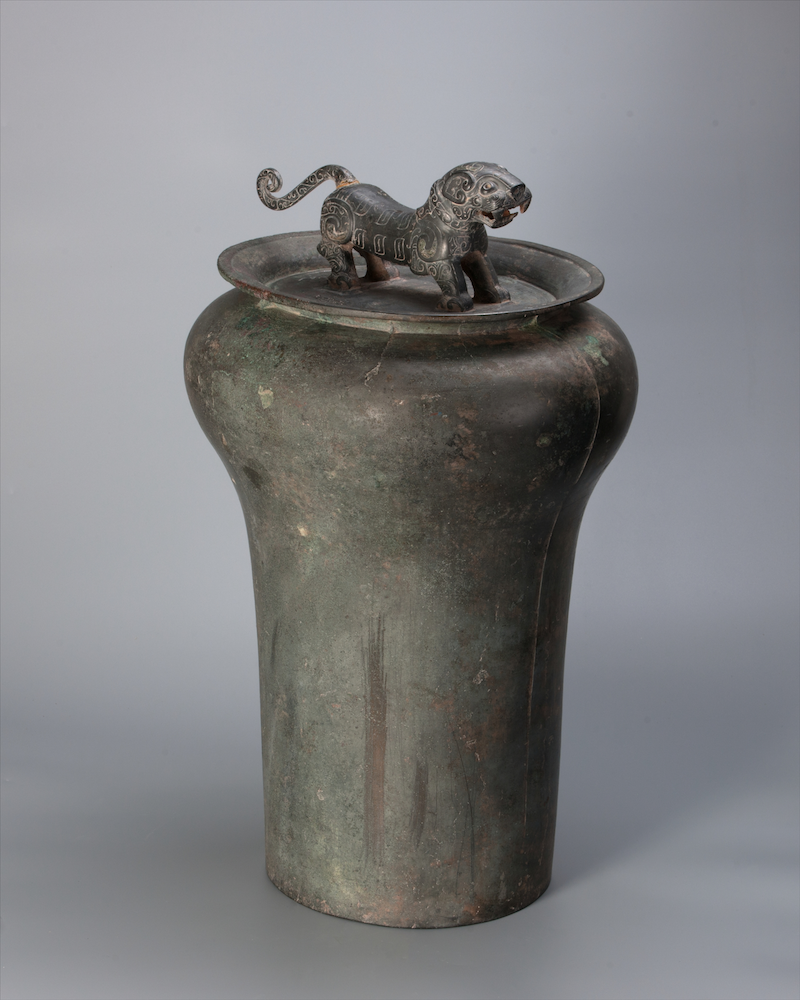
Warring States bronze tiger button
There is also a legendary unearthed experience about the origin of this tiger button. To be precise, it should be the "out of water" experience. In the summer of 1989, when floods ravaged the upper reaches of the Yangtze River, villagers found this treasure in the crevices of boulders in the river channel below the flood sluice of Ganning Hongqi Reservoir in Wanzhou. Comrades from the cultural relics management office rushed to the scene as soon as possible and confirmed that it was a national treasure-level cultural relic—the bronze tiger button of the Warring States Period. They also found that the tiger's tail on the top was gone, and there was a new stubble at the break, so they mobilized the masses to search extensively. Fortunately, a small bronze tail was found like a needle in a haystack. Now you can still see the bonding point between the tiger's tail and the tiger's body.

Bird statue
The "bird-shaped statue" on display is also one of the treasures of the China Three Gorges Museum in Chongqing. The whole is in the shape of a bird, with a fish mouth, eagle beak nose, animal ears, phoenix crown, pigeon body, and duck feet. The whole body is decorated with fine feather patterns, and the feather patterns are regularly inlaid with turquoise, which is extremely exquisite.
The bronze statue was originally a wine vessel. Except for the fish-shaped mouth, this statue has no holes in the whole body. It does not have the practicality of a container. It should be made after learning from the bird and beast statues in the Central Plains. This bird-shaped statue is light in body, thin in wall, hollow, and extremely difficult to cast. It is a rare art masterpiece for the study of Ba people's aesthetic taste, craftsmanship level and casting technology.
"Huayang Guozhi" records, "Although Bazi was the capital of Jiangzhou at the time, it either ruled Dianjiang or Pingdu, and then ruled Langzhong. Most of the tombs of its predecessors are in Zhizhi." Zhizhi, which is today's Fuling, because Wujiang River was named Fushui in ancient times, Ba Guo Mausoleum got its name from the fact that it is often buried here, and this bird-shaped statue comes from the Xiaotianxi cemetery in Fuling. The Xiaotianxi Cemetery is the highest-ranked Ba Kingdom cemetery discovered so far, and this cemetery may be the royal tomb area of the Ba people.

Zudou Clip Combination
In 2002, a complete set of "Zudou clip combination" was unearthed from the Xiaotianxi cemetery in Fuling, Chongqing, including 1 Zu, 8 beans, and 2 clips. A representative utensil of diet and etiquette culture. This time, this group of food utensils also came to the exhibition hall of the China Maritime Museum.
Careful viewers can find that one of the copper beans has obvious traces of attachments. According to "Zhou Li·醢人", "The fruit of the four beans in the palm of the man... the beans for feeding are actually sunflower, 蠃醢, spleen analysis, 蠯醢, mirage, 蚳醢, dolphin shoot, and fish 醢", Namely okra pickles or sauerkraut, escargot pate, minced tripe, mussel pate, clams, ant egg pate, piglet shoulder and fish pate. According to the researchers' inspection of this small trace, it was found that the attachment was ichthyosis, which confirmed the records in the history books.
According to Peng Xuebin, in traditional Chinese etiquette culture, Zu and Dou have the same status as Ding and Gui. "Book of Rites Ritual Vessels" records that "there are twenty-six beans of the son of heaven, six out of ten princes, two out of ten princes, eight senior officials, and six inferior officials." According to the Zhou rituals of the Central Plains, this combination is in line with the sacrificial rituals of the upper doctor class. However, considering that Ba was located in the southwest region at that time, and its national power was far weaker than that of the Central Plains and neighboring Qin and Chu, the tomb owner who used this grade of vessel must have a more noble status.
The exhibition will last until June 4th.
